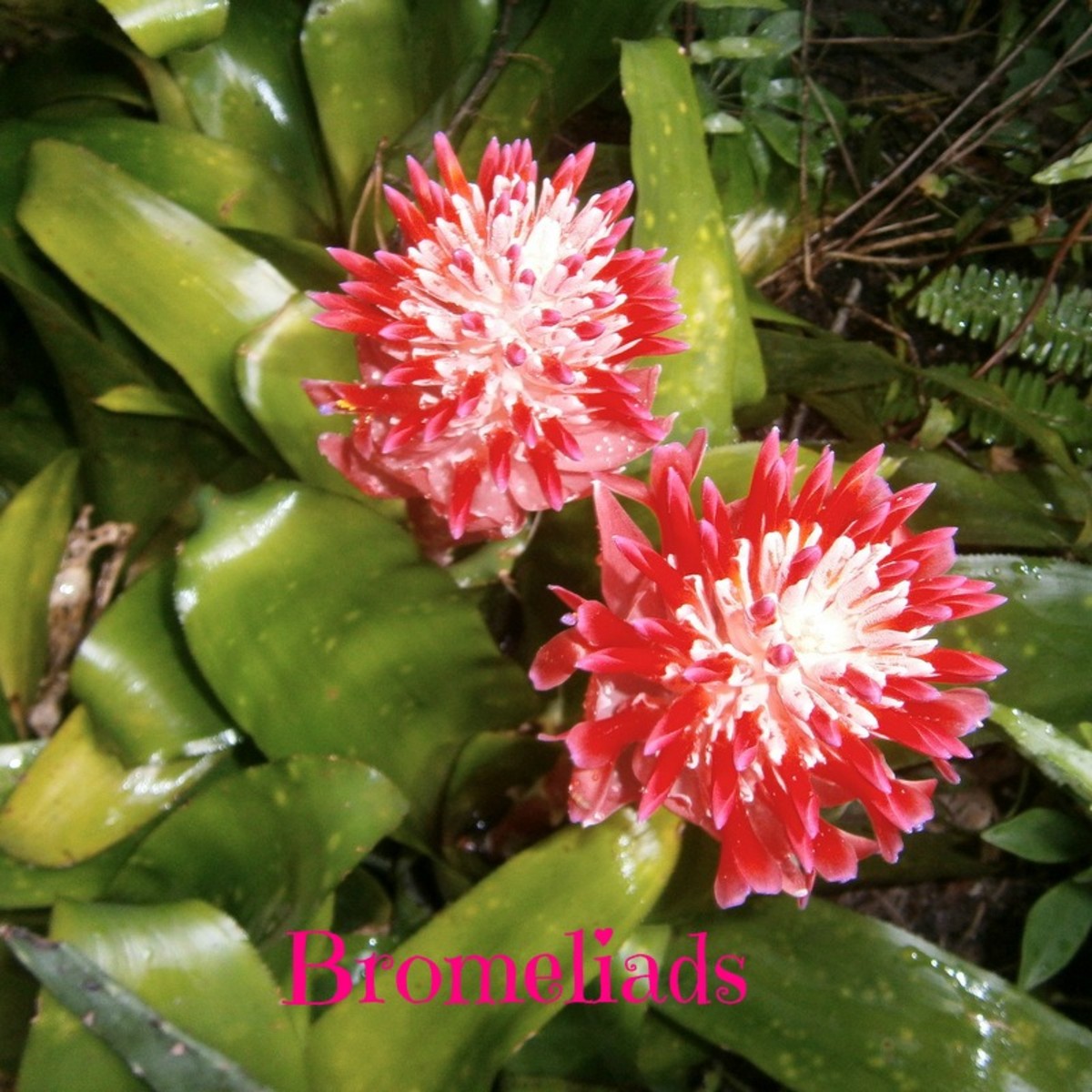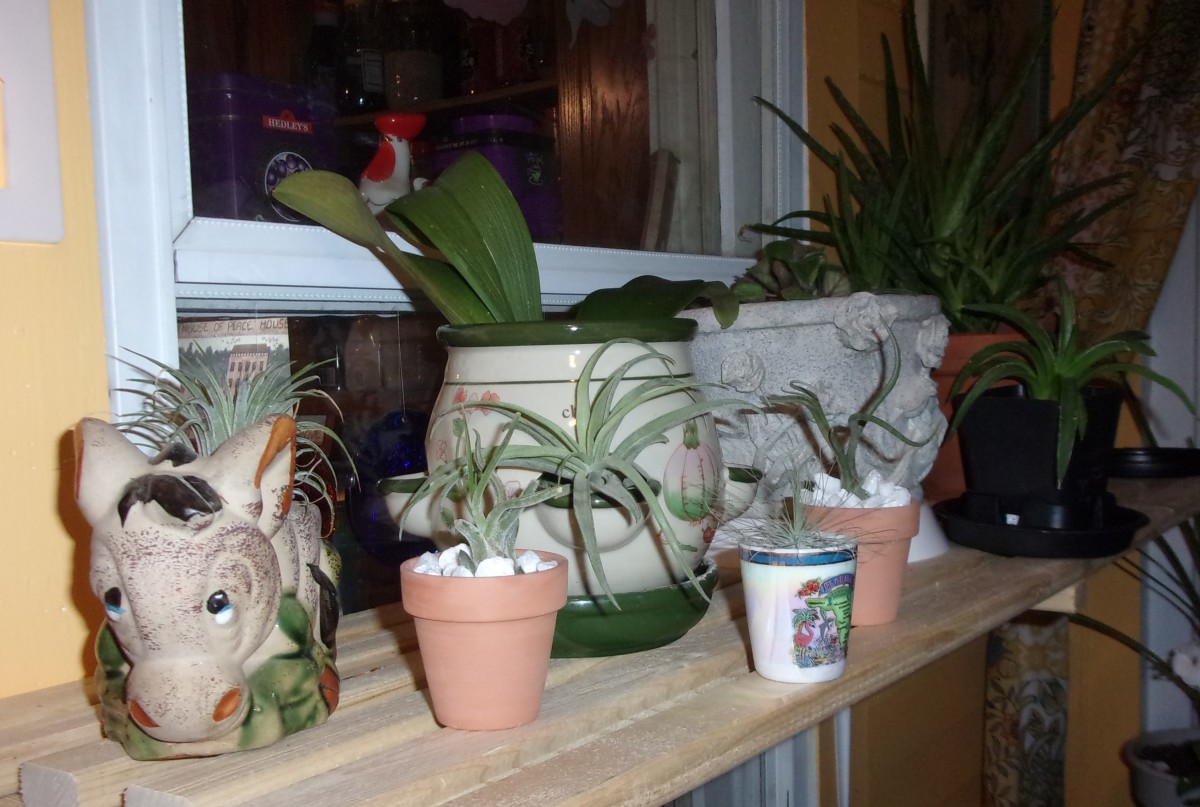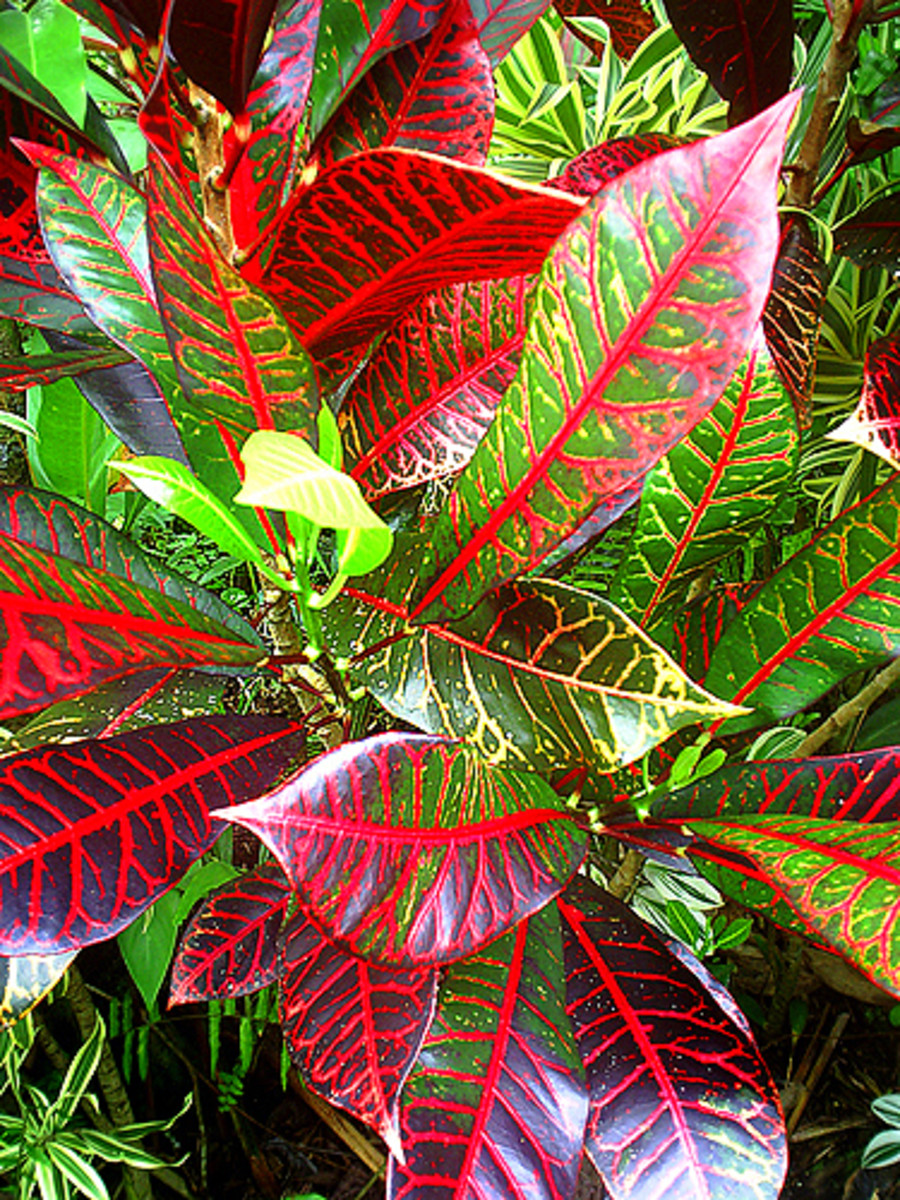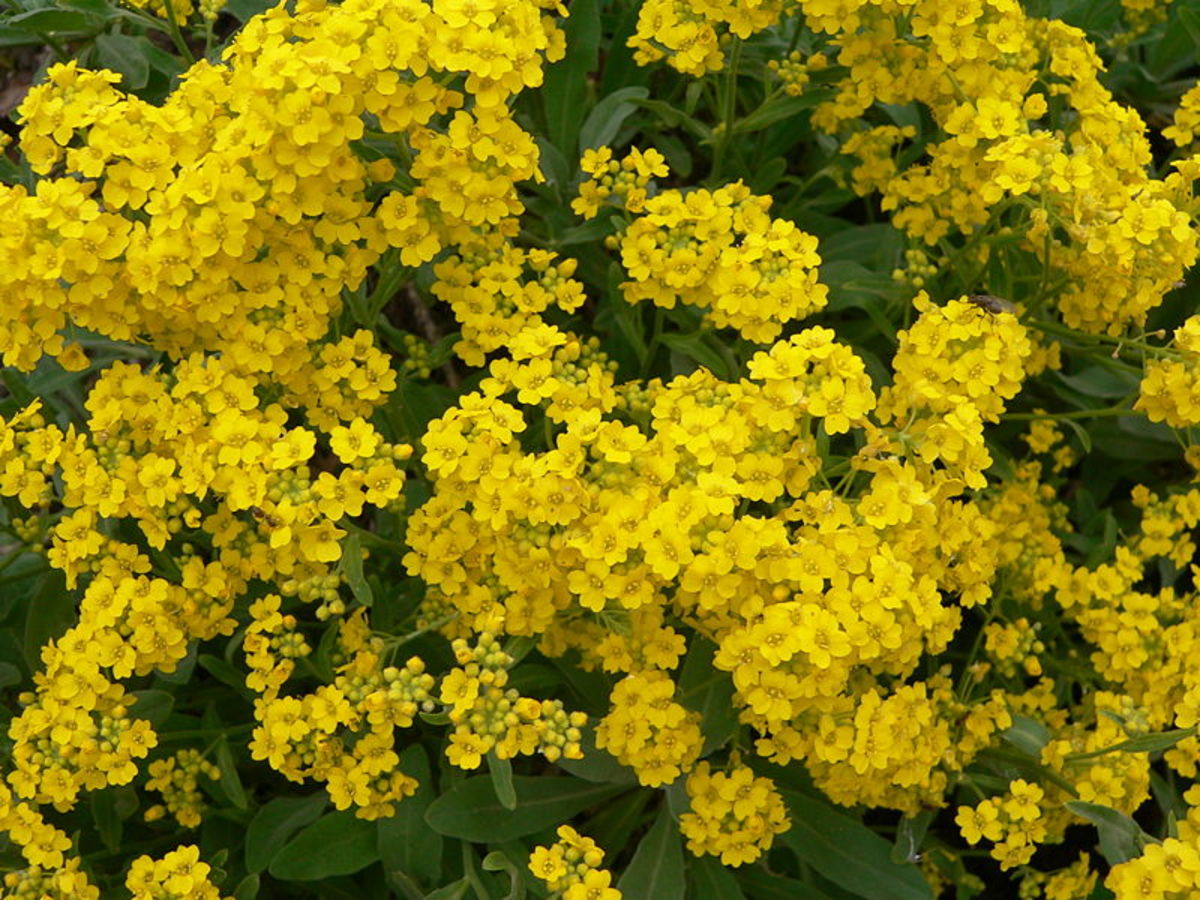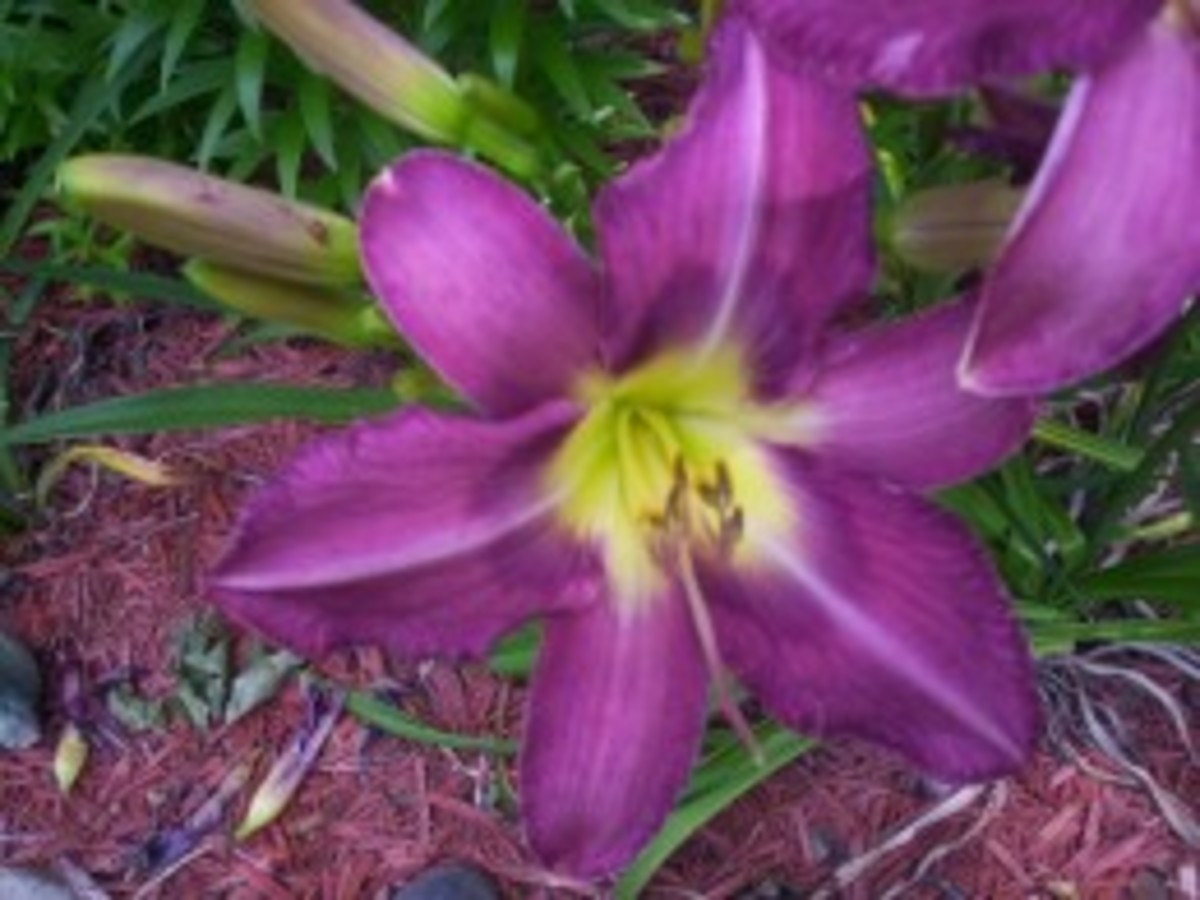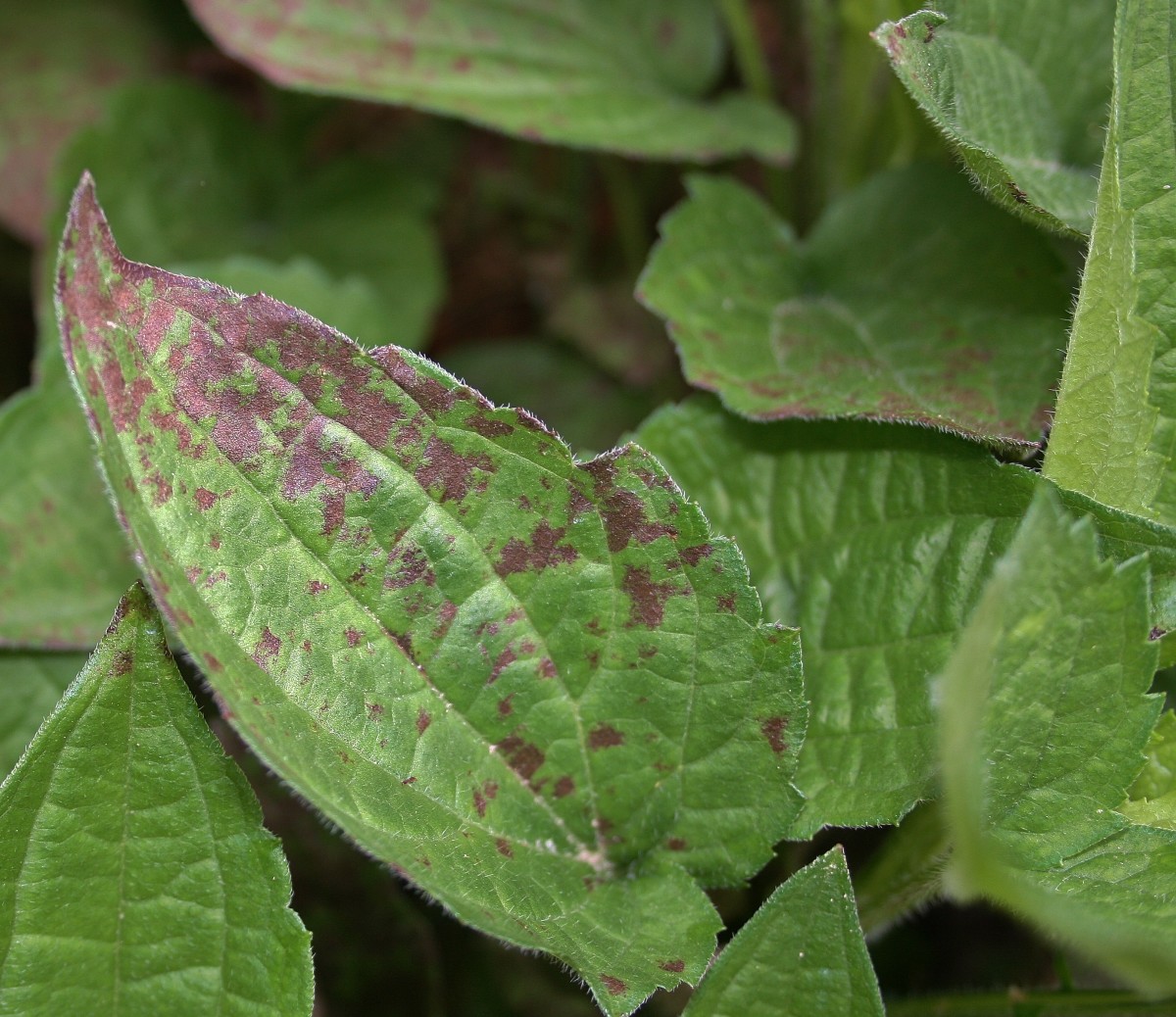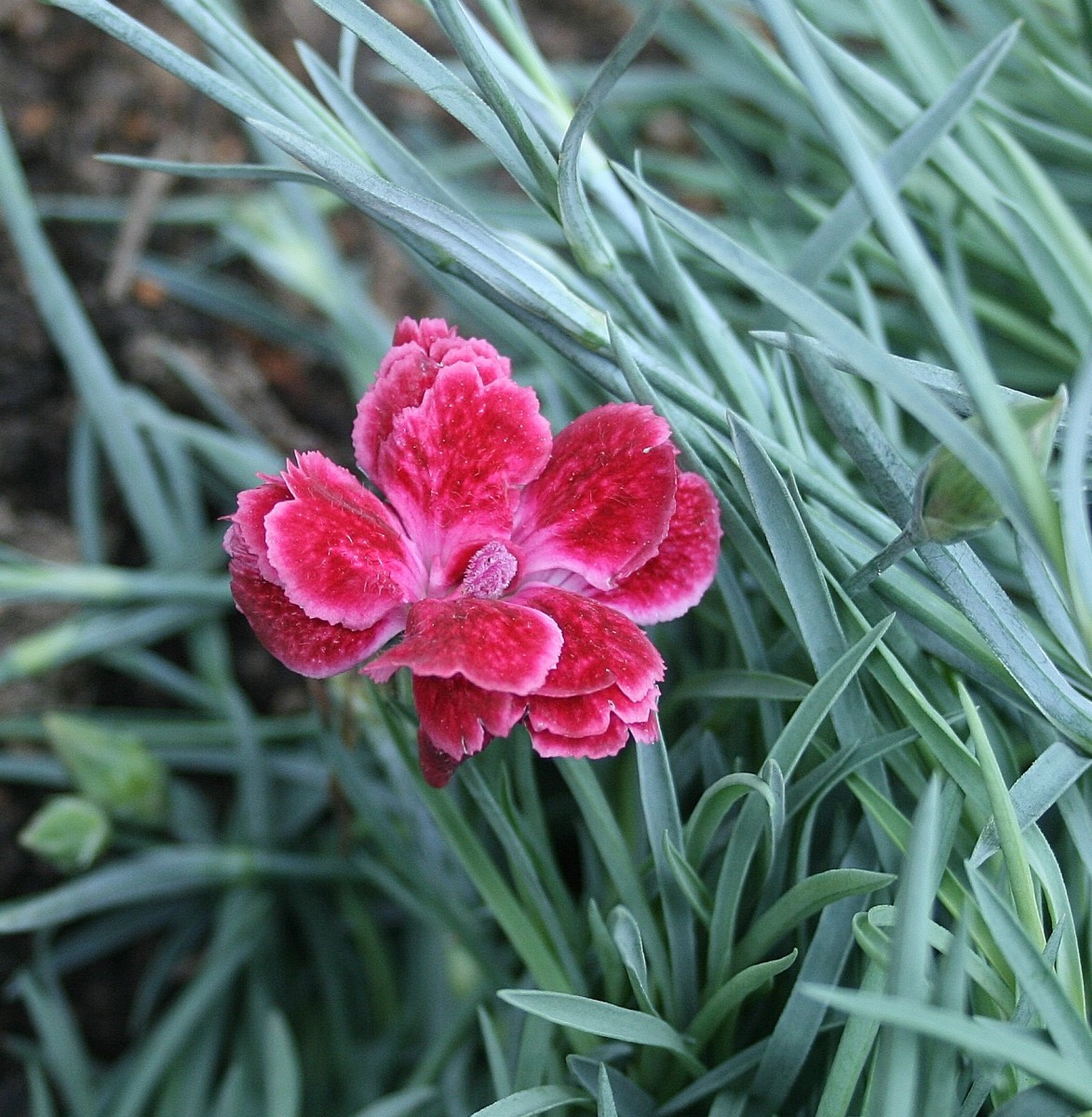- HubPages»
- Home and Garden»
- Gardening»
- Planting Flowers
Bromeliads: Tillandsia Air Plants
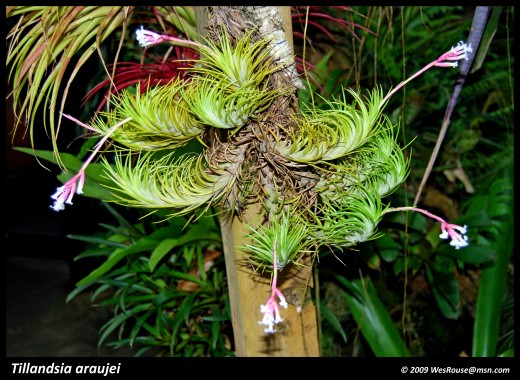
If you want to learn basic information about the bromeliad plant genus Tillandsia, this writing and photos will get you started. Plants of the genus Tillandsia are being raised by bromeliad lovers over the world. Hundreds of species are available from nurseries around the world and they are exhibited prominently in botanical gardens everywhere and in terrariums all over the world. This writing does not cover using tillandsias (air plants) in terrariums or other displays which will be undertaken in a future article.
For many gardeners starting a collection of tillandsias becomes an obsession. Read on to begin your obsession.
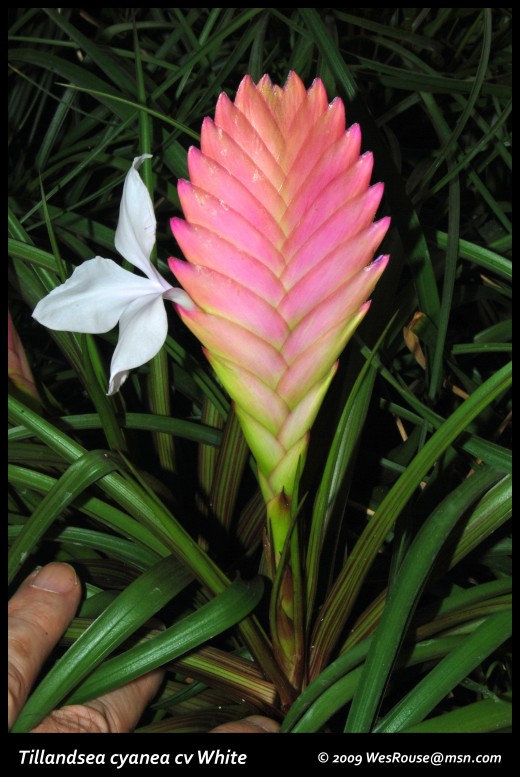
What is a Tillandsia?
The bromeliad genus Tillandsia is a popular genus of plants raised by discriminating plant lovers everywhere. In nature Tillandsia species can be found in southern United States through Central America and practically all of South America. As a group they are often called air plants since many of them can get their water from rain and their nutrients from rain and airborne dust and decaying organic matter. They are easy to grow as most of them require lower levels of light and can stand periods of drought. Many of them can be mounted on a board or on a limb in a tree or grown in osmunda. They reproduce by producing pups as is common in the bromeliad family.
The genus Tillandsia was established in 1753 by Linnaeus, the famous scientist that started the system of classifying plants that we use today. It is the largest bromeliad family and it has a very wide range of size, form and color variation. This plant family also shows the widest range of plant adaptation: from terrestrials (growing in soil) to atmospherics (air plants that do not use roots for water and nutrient uptake).
The diversity of tillandsias is almost open ended. So, recognizing the various plant genera is difficult and is regularly consigned to research specialists called taxonomists. Be sure when you acquire a new bromeliad that you get the name of it and use that name any time you mention the plant. Bromeliads do not generally have common names (a few cultivars [mating of two different species] do), so we have to learn the same name that scientists use. (Of course, sometimes we give our very favorite plants special names on our own.) Each of the photos in this writing have the scientific name in the form that is always used.
The following table might help you better understand the diversity found in the tillandsia family of plants, but you will have to see many of them before you will be able to recognize them. Once you do, you will wonder why everybody can't do it.
Plant Part
| Shape
| Surface
|
|---|---|---|
Leaves
| Always entire: never with spines or toothed edges
| Often covered with trichomes (white scales)
|
Inflorescence
| Upright or pendant w/ single flower to cone or blade
| Covered with bracts (modified leaves)
|
Flower
| Usually tubular with open petals
| Predominately white, blue, yellow
|
Look at the accompanying photos to see these plant parts.
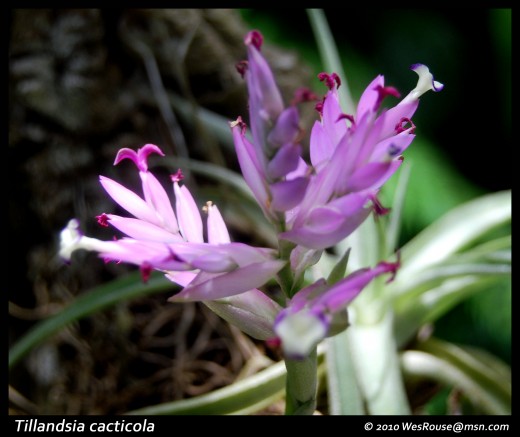
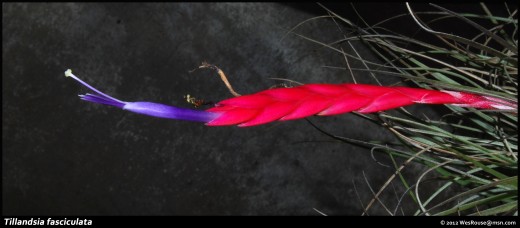
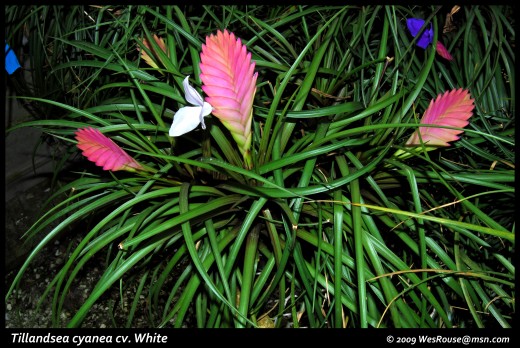
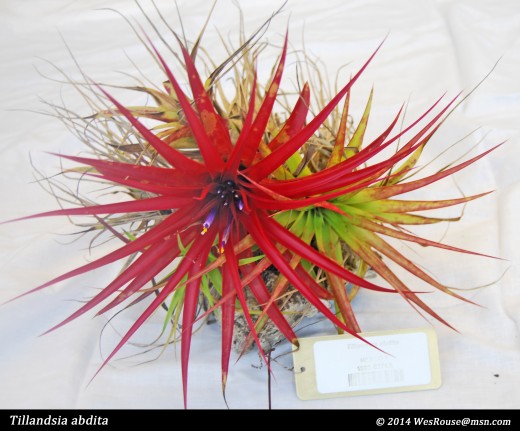
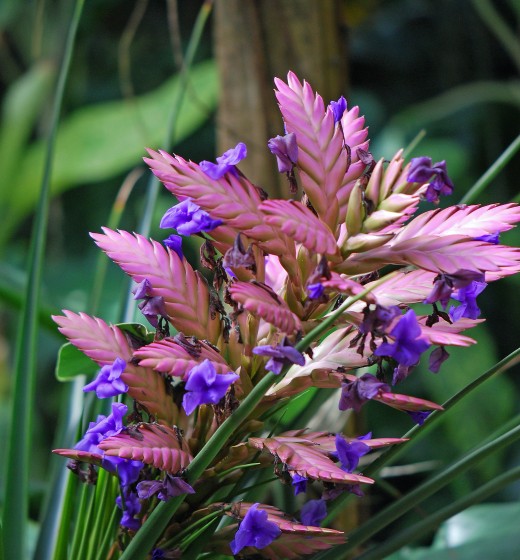
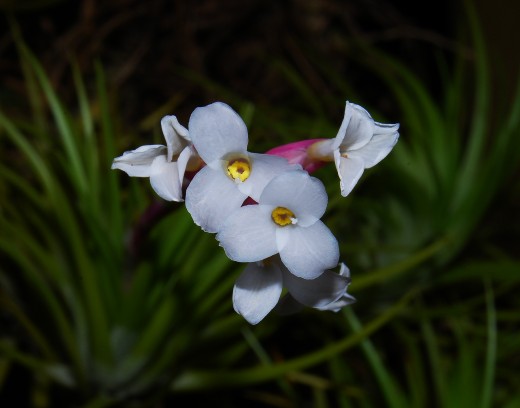
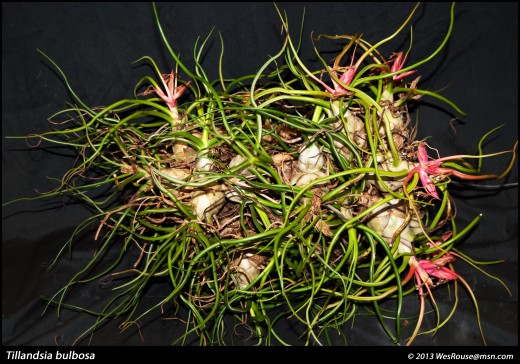
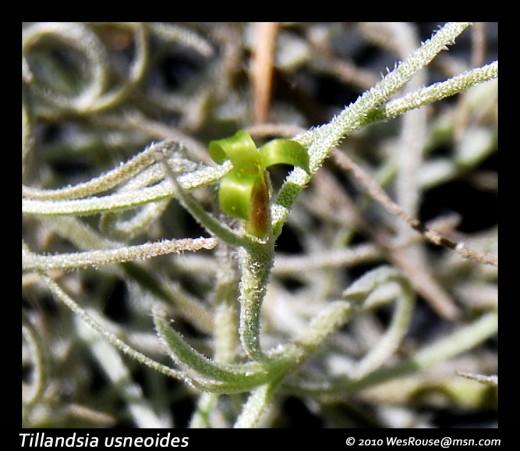
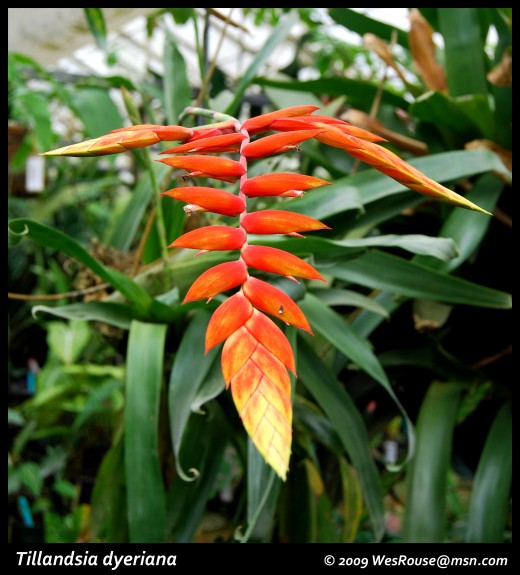
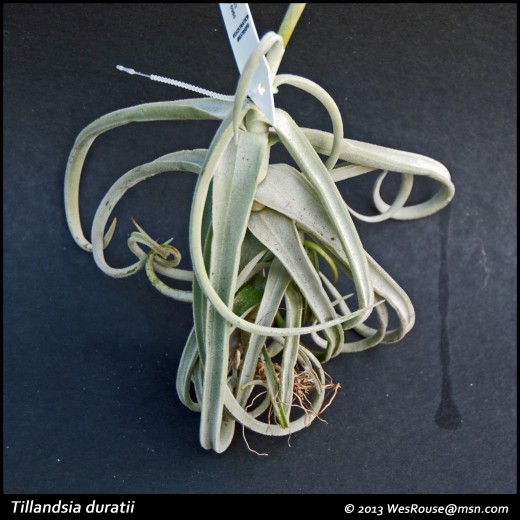
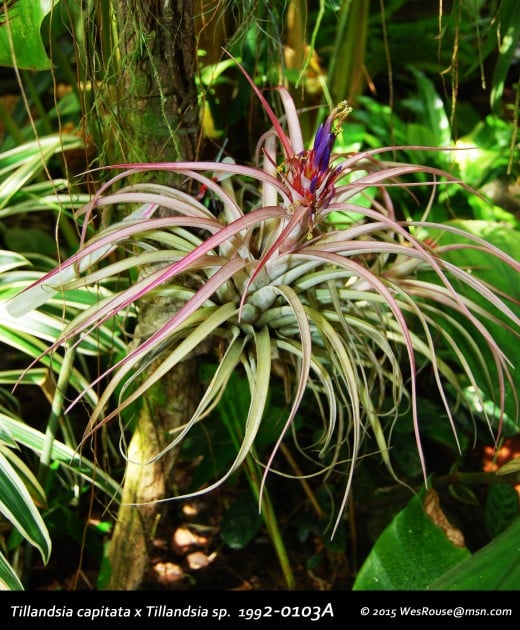
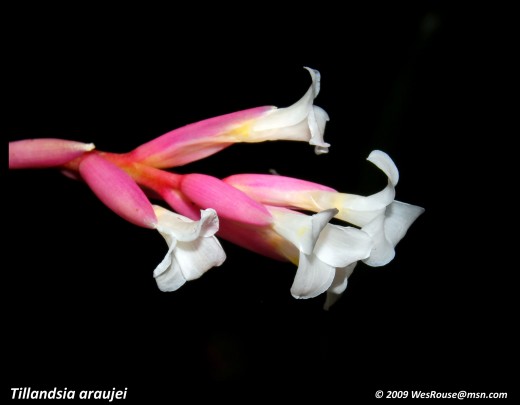
Culturing Tillandsias
Tillandsia is the largest genus in the family, with 650 known species and more to be named. They are typically gray-leafed plants native to bright, semiarid habitats; most are absent the rosette so they do not hold water. Culturing them is fairly easy as the need little care. Instead of symmetrical rosettes of leaves, some tillandsias have twisted, undulating, or curled leaves. Others have succulent leaves, or form hollow bulbous structures at the bases of the plants. Still others develop long, almost vine like stems. Much of the appeal of this genus is due to these strange growth forms.
Go to https://www.birdrocktropicals.com/Tillandsia.asp for more information.
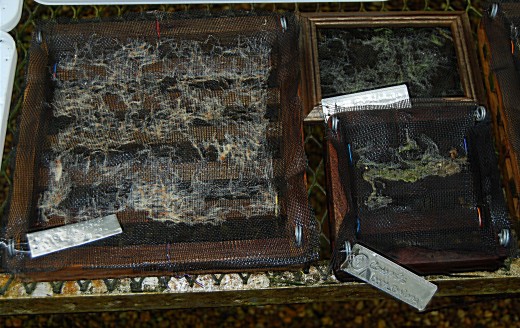
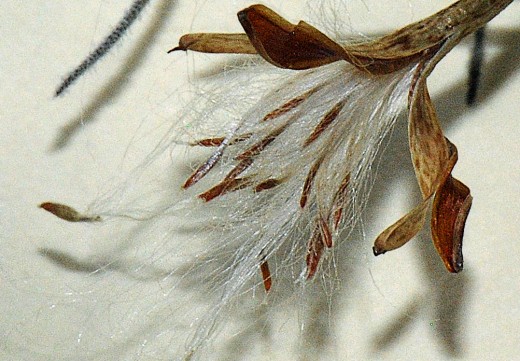
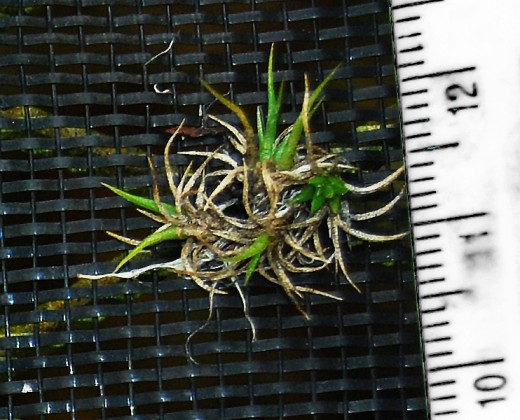
The genus Tillandsia has an undeserved reputation for being difficult to grow from seed. In fact, tillandsias are among the easiest plants in the world to grow. Most species also have a reputation for being very slow. Some are, but under generous cultural conditions many of the popular species can be grown to maturity in five years or less.
It is not always possible to tell if tillandsia seed is viable. In many species the seed begins to germinate before the capsule splits, indicated by a little green nubbin at the end of the coma (the feathery tuft of hairs that carry the seed on the wind). In other species the seed looks brown and lifeless. It may still be good, so sow it. Sow tillandsia seed as soon as possible after the capsule breaks open; however, it remains viable for a few weeks under normal environmental conditions and longer under refrigeration.
Once the plants get to the seedling stage they can be planted where you want them and the following table will help you in taking care of them. However, each species will have an optimal environment. Often your environment is not this optimal place for them to grow best. Use the information in the table to start and then start placing them in different places until you find the best place for them to grow in what you can produce.
See http://fcbs.org/articles/Dimmitt.htmfor more information.
Light
| bright shade to mottled sun
|
Temperature
| 40 - 90 F
|
Air Humidity
| 50 - 60 %
|
Water
| Winter: drench every two weeks Summer: drench every two days
|
Potting and Mounting
| on boards, in trees, in terrariums, some in pots
|
Feeding
| liquid at 10 - 20 % suggested amount
|
Online Information on Tillandsias
Here are some dependable sites where you can learn more about the genus TILLANDSIA. There are also good information pieces on buying sites below.
- Bromeliad Society International
This is the major group of bromeliad growers. The information on this site can be trusted as the latest and best research available. Just start clicking for information. You probably will want to join if you are going to be growing tillandsias. - https://www.youtube.com/watch?v=_jJ4DQtTcqs YouTube video
- http://www.bromeliads.info/tillandsia-bromeliad/ Excellent overall information
- https://tropiflora.com/PDF/Tillandsia%20Care.pdf Excellent for all bromeliads
Books on Amazon

The Best Sources for Purchasing TILLANDSIAS Online
Here are some online companies where you can buy TILLANDSIAS with the assurance that they will stand behind their product.
- Tropiflora
Tropiflora is a large bromeliad nursery in Sarasota Florida. They always have a good supply of many different TILLANDSIAS available. - Tillandsia International
This California producer claims to be the "largest airplant grower in North America." - Bird Rock Tropicals
". . . the leading grower of unusual and exotic bromeliads, especially tillandsias." - Russell's Bromeliads
"Specializing in Tellandsias. All of our bromeliads are nurtured with care, shipped in excellent condition and of the highest quality found in the industry."
Buying on Ebay
Below is an app to take you to Ebay. Once you are there you can run a search for all tillandsias. There are a lot of them, and you can get good bargains. However, if you want a certain species or cultivar, you cannot depend on the name given for the plant. However, if you want the plant shown, go ahead and order it and enjoy raising it. If, on the other hand, you really want a certain plant, you should stay with the nurseries above. You might even note now and then that the plant offered is not even a bromeliad let alone a tillandsia!

